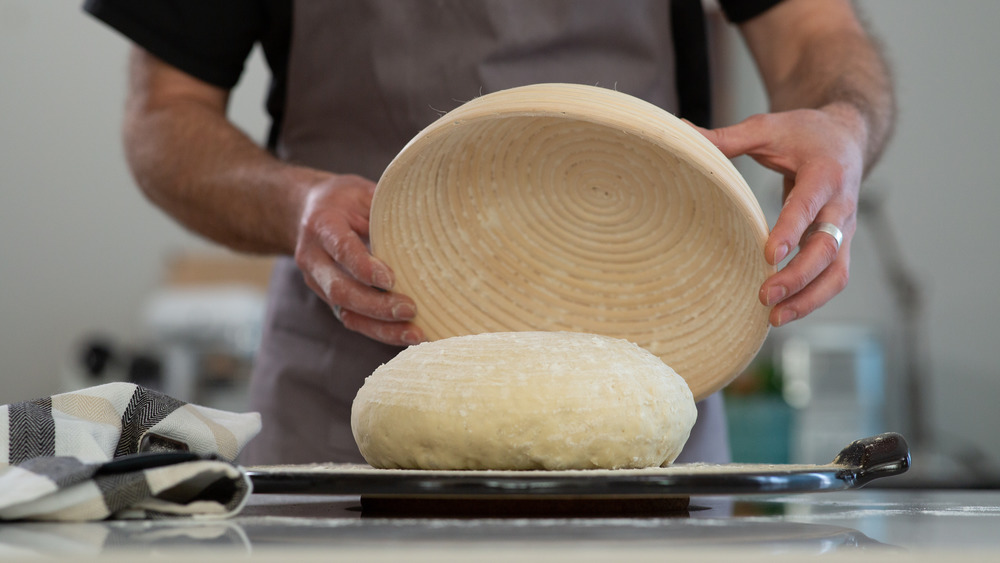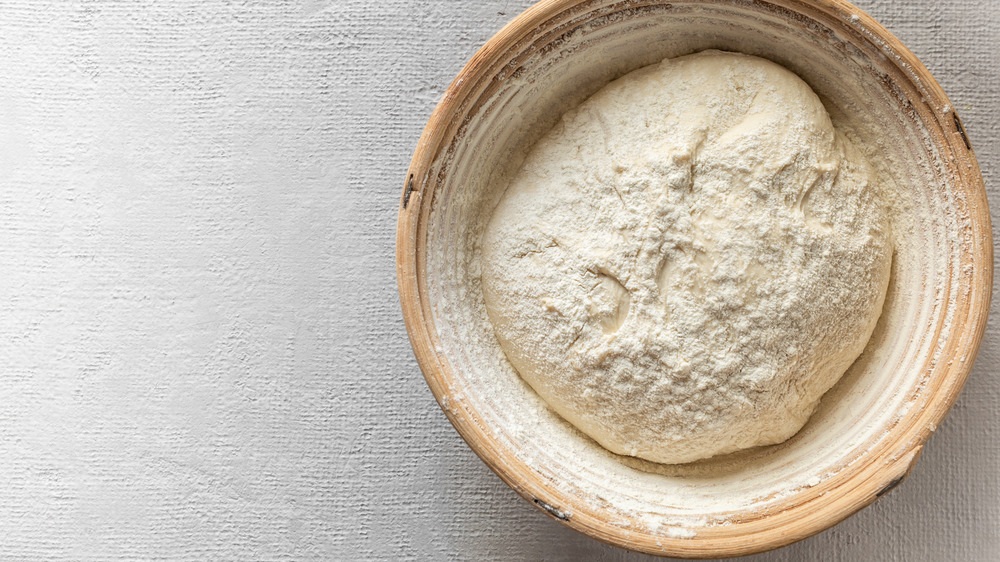What You Should Know About Proofing Sourdough
Sourdough bread can be difficult to make, but oh so good to eat. The tangy flavor and chewy, but delicious texture of this bread make it a popular go to as part of your favorite sandwich or your morning toast.
Per Food and Wine, people have been making sourdough for thousands of years, using water and flour and allowing it to ferment. While many of us may opt to buy our bread instead of making it, the publication notes that sourdough is healthier than breads that use commercial yeast, stating that it is easier for your body to break down.
But if you want to join the growing wave of people who have turned to making their own sourdough starter, which can be quite the commitment for both the novice bread maker and the skilled, then you may want to take a few notes when it comes to the often ominous task of proofing.
Proofing, as defined by MasterClass, can mean any part of the fermentation process, but it is most commonly used in reference to the "final rise" when you shape your bread dough right before baking it. It sounds like the easiest part of the baking bread, right? Well, it can also be one of the trickiest to get just right. Here's what you need to know.
Perfect proofing depends on what flavor you want to achieve
MasterClass goes on further to explain that proofing is one of the most important steps in bread baking because this is when those air bubbles form that will help create your bread's texture and flavor and your dough almost doubles in size. Proofing your dough is all about creating the right environment for the fermentation to happen, and one of the most important factors is temperature.
True Sourdough shares that you want a humid area, free of drafts, where the temperature is between 75 and 82 degrees Fahrenheit. However, to get an intense sourdough flavor, you can opt for a longer fermentation that can span anywhere from 12 to 24 hours at a colder temperature (between 35 and 50 degrees Fahrenheit) — a climate that can be found in the refrigerator.
But how do you know when your dough is ready to bake? According to King Arthur Baking Company, there is an art to perfecting your proofing. The brand describes this as the point when your dough is both malleable and has risen to somewhere between 75 to 80 percent, leaving the other 20 percent to happen when you pop it in the oven to bake. They also suggest poking your dough. You don't want it to be too soft or too dense, and King Arthur cautions that if you start to see big air bubbles, it's time to bake.

